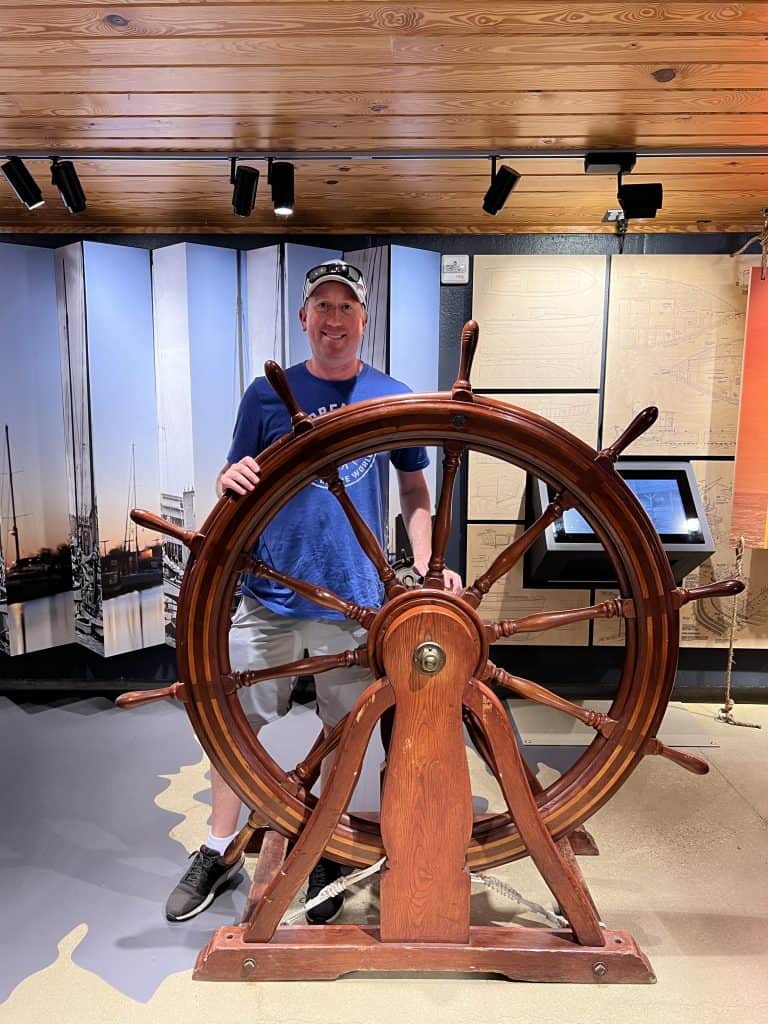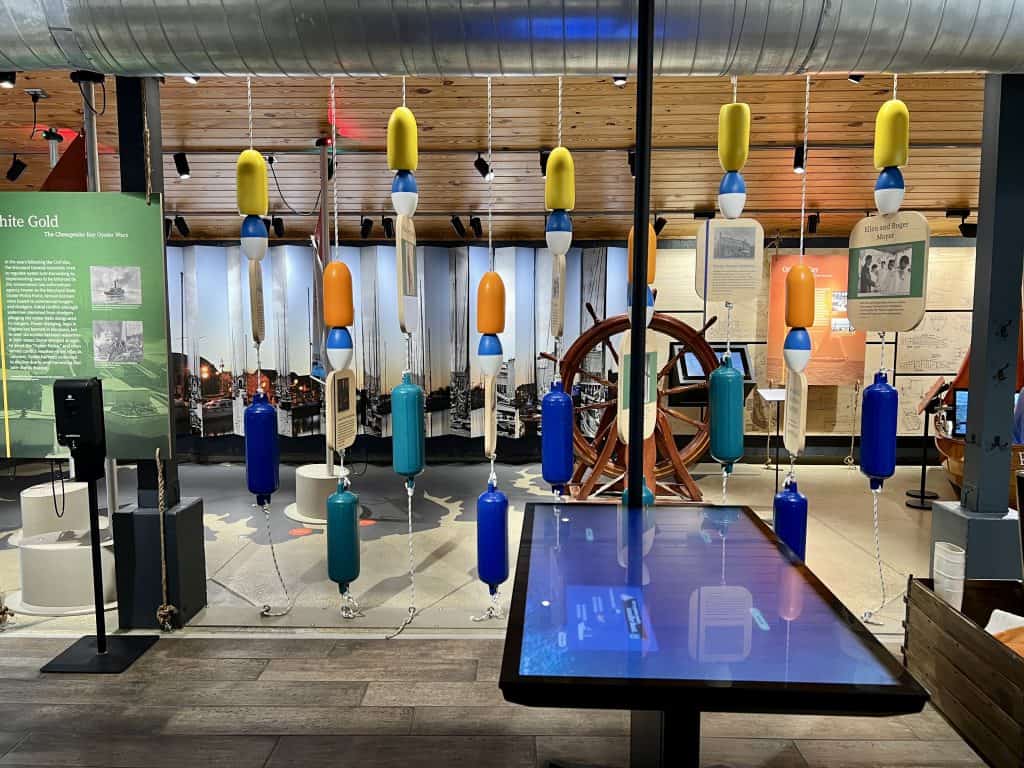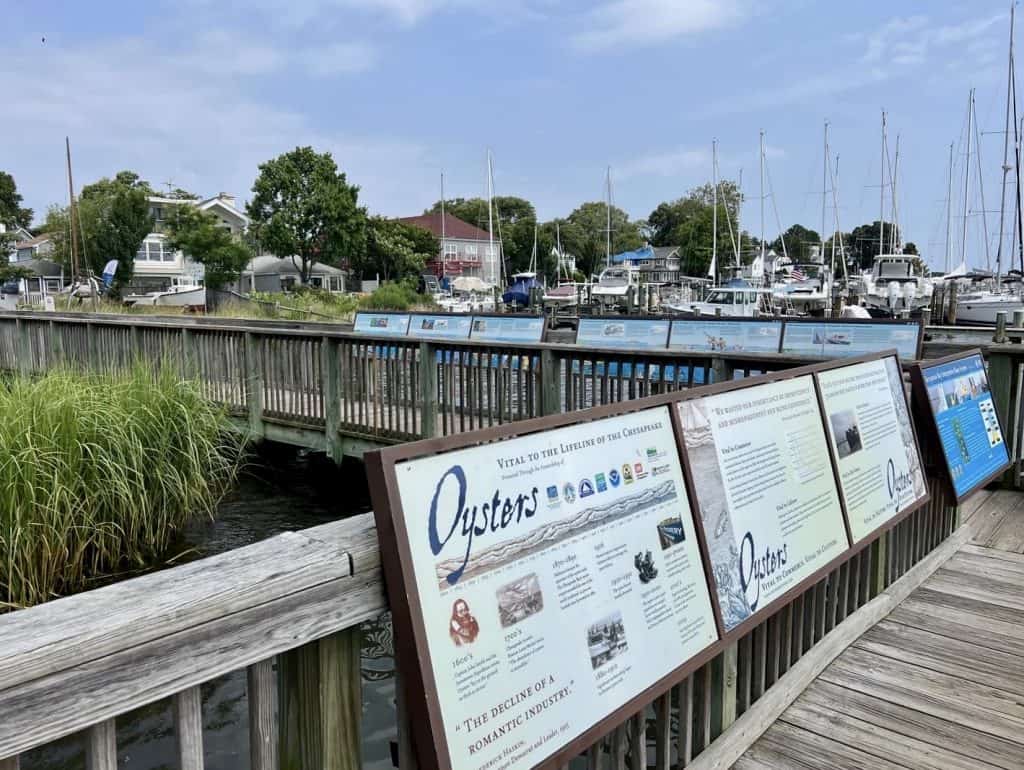Exploring the Annapolis Maritime Museum
On a recent visit to Annapolis (check out our post featuring one of the BEST tours we have ever taken- the historical walking tour of the US Naval Academy. and our tour of the Maryland State House) we stopped at the Annapolis Maritime Museum to learn about the nautical history of the area. (Looking for other great, seaside spots? Check out our posts featuring New Bedford, Massachusetts; Gloucester, Massachusetts; and Newport, Rhode Island).
What was once the home of the McNasby Oyster Company throughout most of the 20th century, the property became the Eastport Historical Committee and Barge House Museum in the 1980s and then developed Annapolis Maritime Museum in 2000 with expansions less than a decade later. The museum showcases the history of the local watermen (the term for men who ) and the harvesting, and over-harvesting of oysters. By the start of the 21st century, less than one percent of oysters were left and today there is a massive restoration project to save the oysters, with the goal to reharvest 10 BILLION oysters by 2035.
The museum also highlights the Chesapeake Bay, the largest estuary in the United States, fed by 150 freshwater rivers and streams; water from six states flows into the Bay every day. The 11,000+ miles of tidal shoreline are home to over 3,600 spies of plants and animals. The name “Chesapeake” is the Native American term for “Big Water.”
The main maritime Museum property, on the site of the McNasby Oyster Company building, has two 500 gallon aquariums, virtual reality experiences, and hologram exhibits), an outdoor boardwalk, boatyard exhibits, and beautiful views of the Chesapeake Bay Bridge. The 12 acre Park Campus is situated on the shores of Back Creek and has indoor and outdoor spaces for function and events, a large boardwalk, kayak launch and rentals and the Skipjack Wilma Lee which has weekly cruises for visitors.

Travel Tips:
Would you like to save this?
12 Things to Do at the Annapolis Maritime Museum:
- Start by viewing the five minute introductory video in the art gallery (and spend time checking out the artwork).
- Compare the Bay Health Aquarium tanks in 1608 (with plentiful oysters and clear water) and the bay today (with pollution and over harvesting of oysters) and compare the tanks of bay water from the 1600s, 1700s, 1800s, 1900s, and 2000s.
- Learn about the process of oystering (harvesting, buying, shucking, cleaning, canning and packing, and shipping)
- Flip hanging buoys to learn about the McNasby Oyster Company and other local watermen.
- Read the Magic Book, a hologram book to learn about the watershed
- Experience life on a canoe, waterman trip, and sailboat race with a virtual reality set.
- Play the Half Shell game on the huge interactive screen.
- Figure out which tools are best for oyster harvesting.
- Find new recipes using oysters in a variety of oyster themed cookbooks.
- Walk the outdoor boardwalk and read about the history of oysters in the Chesapeake Bay from 1608-1998.
- Head to the Boatyard and peek inside the Draketrail Peg Wallce and the Skipjack Lydia D boats outside.
- Follow the timeline of boat oystering boats from a dugout in the 1600s to a Tonger in the 1900s.
Looking for other things to do in Annapolis? Check out our post featuring the US Naval Academy. and the Maryland State House. And for more maritime history, check out our posts featuring New Bedford, Gloucester, and Newport. And follow along on our adventures on Instagram, Facebook, Pinterest, and Twitter.
Disclosure: Our family was given a media pass to explore the museum; all opinions expressed are my own.


























So thorough and complete coverage, as usual. I live about an hour from Annapolis and have enjoyed the Naval Academy tour very much, but now you’ve peaked my interest to return and add this Museum to our list. I do believe our guests would enjoy this spot very much. Thank you!
What fascinating information about this important industry to the Middle Atlantic area!This is also a great example of the importance of caring for natural resources. The area is beautiful and I would love to see this museum on our next trip. Wonderful job!